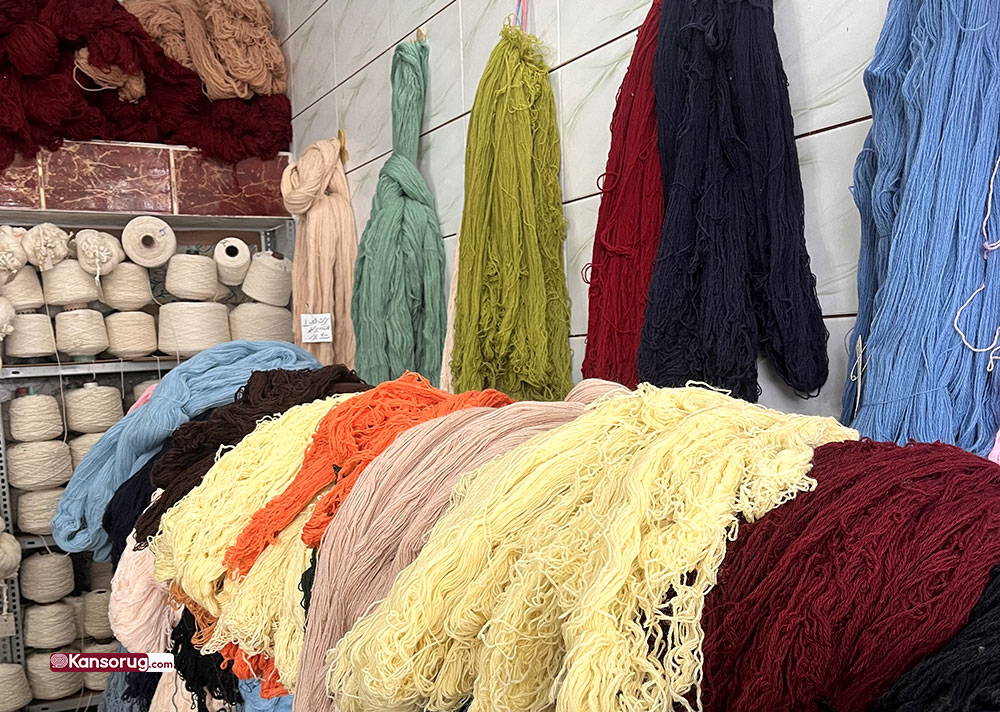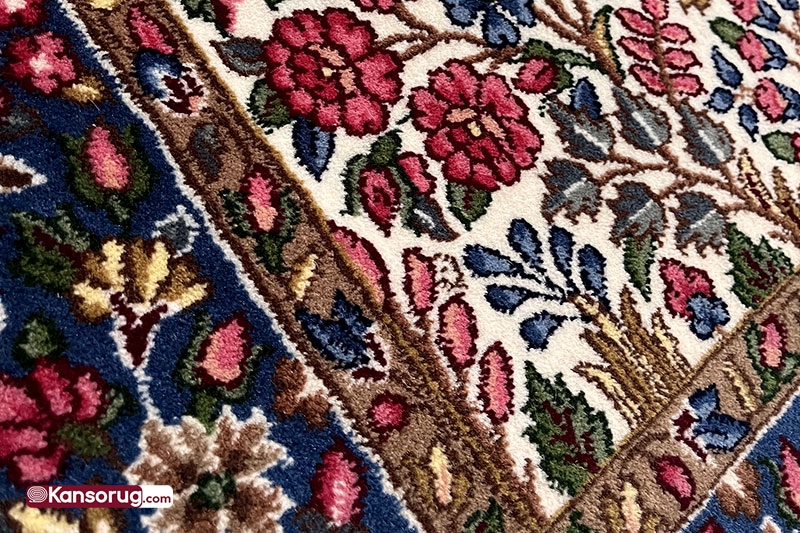Step into the mesmerizing world of Persian handwoven carpets, where every thread is a testament to centuries-old traditions and the unparalleled artistry of Iranian artisans. Among the myriad elements that contribute to their allure, perhaps none is more captivating than the vibrant colors that adorn these timeless treasures. In this exploration of Persian carpet weaving, we will delve into the significance of color, from its historical roots to its practical applications in modern-day interior design.
Let's learn more about The Artistry of Color in Persian Handwoven Carpets.
In This Blog...
ToggleThe Colorful Mastery of Persian Hand-Woven Carpets
Among the primary reasons Persian carpets surpass other carpet brands worldwide, besides their quality texture and exquisite designs, is their precise and traditional dyeing methods. These colors, infused with ancient psychology to soothe both mind and body, rely on the use of natural raw materials to ensure the finest carpet products. The immediate visual impact of Persian carpets speaks volumes about their allure. Moreover, some antique Persian carpets boast an impressive spectrum of up to 280 colors, showcasing the depth of artistry in this craft. Raw materials such as indigo, pomegranate, iron, turmeric, saffron, and walnut form the foundation of the rose color prevalent in Iranian carpets. It's fascinating to note that dyeing masters meticulously ensured color stability over time, preventing color fading or blending. This mastery is key to the enduring beauty and durability of Iranian carpets, which have remained captivating for centuries.
The Rich Tapestry of Persian Carpet Colors: A Journey Through History
Color is not merely a decorative element in Persian handwoven carpets; it is a language of its own, steeped in symbolism and cultural significance. For centuries, master dyers have derived their pigments from a diverse array of natural sources, including plants, minerals, and even insects. These raw materials, meticulously sourced from the mountains and plains of Iran, yield a spectrum of hues that range from deep crimson to lustrous azure. Before the advent of synthetic dyes, Persian carpets were dyed using traditional methods that imbued each thread with a richness and depth of color unparalleled in modern manufacturing.
The Significance of Color in Persian Carpet Weaving: Symbolism and Tradition
Delving deeper into the world of Persian carpet weaving, we uncover the hidden meanings behind each color palette. Red, symbolizing happiness and joy, has long been associated with celebration and festivity in Iranian culture. Green, evoking the lush landscapes of spring, represents renewal and fertility. Each color carries with it a tapestry of emotions and associations, reflecting the values and beliefs of the artisans who meticulously craft these masterpieces. Whether adorning the floors of palaces or the humble abodes of nomadic tribes, Persian carpets serve as both a functional floor covering and a cultural artifact, embodying the essence of Iranian craftsmanship and heritage.
Practical Considerations for Carpet Color Selection: Balancing Aesthetics and Functionality
While the aesthetic appeal of Persian carpets is undeniable, practical considerations also play a crucial role in color selection. Lighter rugs can create a sense of spaciousness in smaller rooms, while darker hues are adept at concealing stains and dirt in high-traffic areas. Multi-colored carpets with intricate patterns offer a versatile option for homeowners seeking to add visual interest to their living spaces. Additionally, factors such as exposure to sunlight and cleaning chemicals can affect the longevity of carpet colors, necessitating proper care and maintenance to preserve their beauty over time.
Read here how to maintain the carpet.
Types of Dyeing in Persian Carpets: Herbal vs. Chemical
The art of dyeing Persian carpets encompasses two distinct methods: herbal and chemical. Herbal dyeing, rooted in ancient traditions, utilizes natural ingredients such as saffron, runas root, and pomegranate to create a rich palette of colors. These organic pigments not only imbue the carpets with vibrant hues but also carry cultural significance, reflecting Iran's deep connection to its natural landscape. In contrast, chemical dyeing offers a more expedient and cost-effective approach, employing synthetic compounds to achieve a similar range of colors. While chemical dyes have become increasingly prevalent in modern carpet manufacturing, purists often prefer the depth and authenticity of herbal dyeing methods.
Causes of Color Defects and Solutions: Preserving the Legacy
Despite their enduring beauty, Persian carpets are not immune to the effects of time and wear. Color fading, discoloration, and defects can occur due to a variety of factors, including exposure to sunlight, improper cleaning techniques, and environmental pollutants. Fortunately, expert restoration services are available to address these issues and ensure that Persian carpets retain their splendor for generations to come. Through careful color matching and meticulous craftsmanship, skilled artisans can breathe new life into faded carpets, preserving their legacy for future admirers to cherish.
Choosing the Perfect Handmade Carpet Color for Your Home Décor
Choosing the perfect color for your handmade carpet can significantly impact the ambiance and aesthetics of your living space. When selecting carpet colors for the living room, consider hues that complement your existing decor while adding warmth and vibrancy to the room. Opt for earthy tones like khaki or walnut for a cozy feel, or experiment with bold and vibrant colors to make a statement. Additionally, if you're concerned about maintenance, choosing the best color persian carpet for not showing dirt is crucial. Multi-colored carpets with busy designs can effectively camouflage dirt and stains, making them ideal for high-traffic areas like the living room.
When decorating with handmade carpets, it's essential to consider the color scheme of your walls and furniture. For cream walls, the best carpet color should either complement or contrast with the neutral backdrop. Soft and bright colors like light blue or turquoise can add a refreshing pop to the room, while darker hues like garlic blue or black can create a sophisticated contrast. Similarly, when choosing a carpet for the bedroom, opt for calming and soothing colors like pastel greens or blues to promote relaxation and tranquility. By carefully selecting the right carpet color combinations, you can enhance the overall aesthetic appeal of your living space while ensuring practicality and ease of maintenance.
Bottom Line:
As we conclude our journey through the vibrant tapestry of Persian carpet colors, we are reminded of the enduring legacy of Persian craftsmanship and artistry. From the ancient traditions of natural dyeing to the modern innovations in restoration techniques, Persian carpets continue to captivate the hearts and minds of collectors and connoisseurs around the world. By understanding the Artistry of Color in Persian Handwoven Carpets weaving and embracing both its aesthetic and practical aspects, we can truly appreciate the beauty and cultural heritage of these exquisite works of art.
Please rate Stellar
Your page rank:


